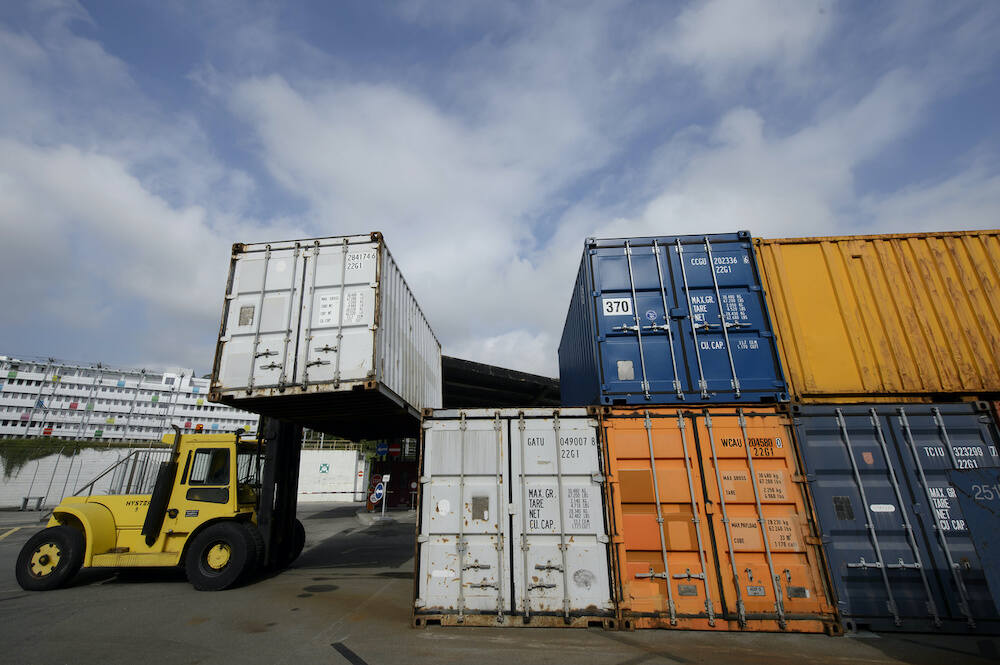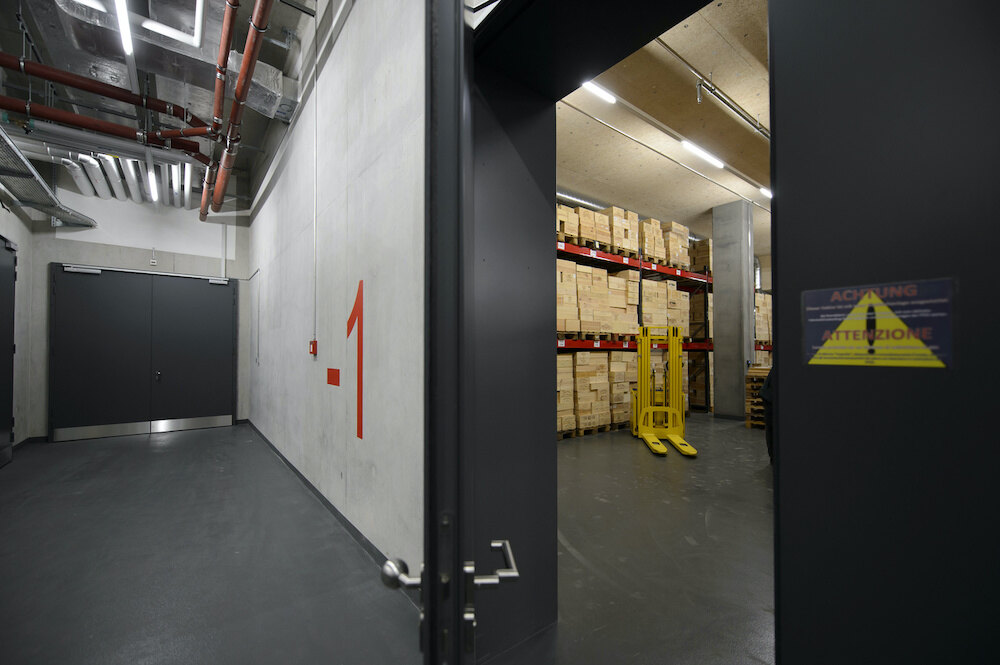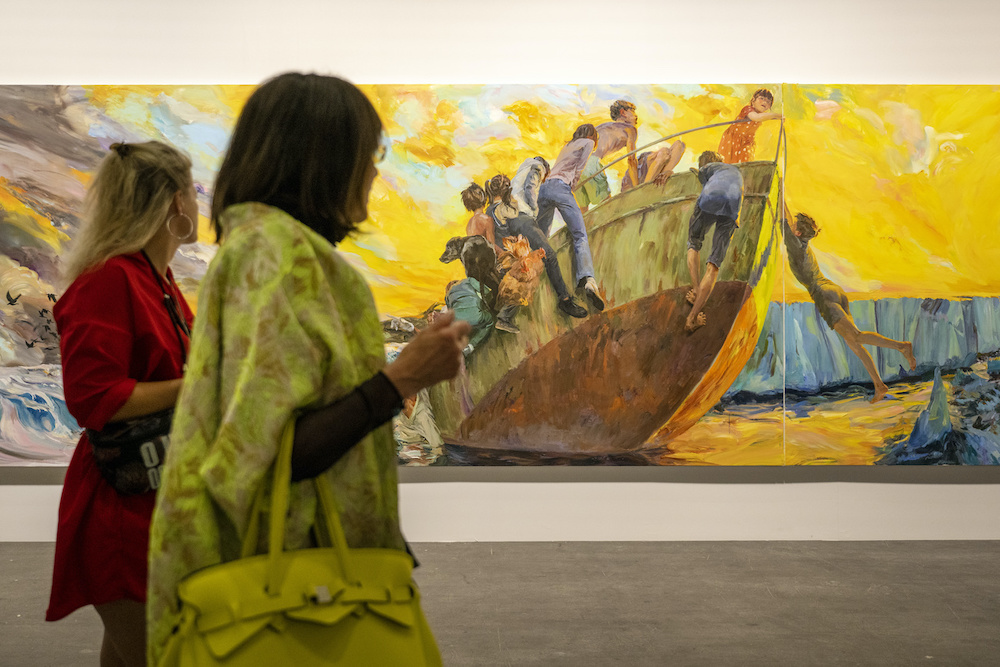jeu, Juil 27th 2023

The Geneva Freeport holds the world’s largest and most secretive art collection. It also has a reputation for helping the ultra-wealthy evade taxes; and more recently, helping Russian oligarchs avoid sanctions.
With two locations, one at La Praille and the other at the airport, Geneva’s free port is easily Switzerland’s largest customs warehouse. The complex totals 110,000 meters, a floor space equivalent to 22 football fields. It’s most notorious for the incredible collection of artworks hidden within its walls — art accounts for 40% of the goods stored in the warehouse.
According to the specialist art journal Connaissances des Arts, the Geneva free port houses around 1.2 million artworks, estimated at $100 billion. The New York Times reports that the free port holds approximately a thousand Picasso pieces, as well as artwork from Da Vinci, Klimt, Renoir, Warhol, and Van Gogh.
But the art isn’t on display. Instead, most of it is stored in wooden crates, packed into high-tech climate-controlled rooms leased by collectors — which brings in the canton of Geneva, the facility’s majority owner, about CHF 10-12 million a year in rent.
As the Louvre’s director, Jean-Luc Martinez, says, it’s the “greatest art collection nobody gets to see.”

From the outside, the nondescript buildings seem an unlikely place to find exquisite art, especially masterpieces. But the plain appearance is all part of its appeal to the wealthy clientele the facility serves — the complex’s facade reflects the Swiss brand of secrecy and discretion, which is of the highest importance at Geneva’s freeport.
The facility is a veritable Fort Knox. The outside of the building is a large, windowless, concrete block designed to resist earthquakes and fires.
Inside, several rooms follow specific criteria to fit the highest conservation conditions. Artworks and antiquities are stored in hygrometry and temperature-controlled rooms built as impenetrable safes. They are locked behind nameless, armored doors built to resist explosives and equipped with biometric readers granting access.
Free ports have always been a haven for hiding assets tax-free, but their financial benefits became particularly desirable in 2017 when Swiss banks started to pass on information to tax authorities of other countries. Unable to easily hide assets in Swiss banks, the ultra-wealthy needed a new tax-free option to stow their wealth, and, for many, free ports and the thriving art market were the answer.
Free ports are a new part of the structure for those looking to avoid taxes, Geneva’s former mayor Rémy Pagani explains.
“For some collectors, art is being treated as a capital asset in their portfolio. They are becoming more financially savvy, and free ports have become a pillar of all of this,” says Evan Beard, who advises clients on art and finance at U.S. Trust.
As long as items remain in the facility, owners are not required to pay import taxes or customs duties, amounting to 15% in some countries. While in the warehouse, items are considered in “transit.” Most items can be stored for six months, but these rules are easily evaded and don’t apply to any goods stored before the law was in place.
For example, a $50 million painting is purchased at auction in New York. Tagged onto this price is a $4.4 million sales tax bill; however, this bill disappears when the painting is shipped to a free port and remains suspended until the artwork leaves the warehouse.
Art and other goods can also be bought and sold within freeports without levying any fees. Likewise, whatever is sold within a free port—and remains there in storage—can exchange hands without either side paying taxes for the transaction.
The La Praille facility includes a renowned art restoration facility, meaning art can be repaired and upsold without ever leaving the warehouse. All services in the duty-free zone are also free of taxes. These enticing conditions mean that some works of art have remained in Geneva’s freeport for decades.

When art is exchanged this way, there is no paper trail detailing what’s been bought or sold and at what price by whom, making free ports an ideal place for discrete art sales — and fraudulent transactions.
“Unfortunately, because of this particular system and confidentiality, anyone can rent a space in the free port to deposit objects. This has been abused by traffickers and those in the field of stolen art and looted antiquities,” explains Marc-André Renold, professor of art law and cultural property at the University of Geneva.
Following a string of scandals, Switzerland began cleaning up the free port’s reputation by tightening laws on money laundering and the transfer of cultural property. In 2016, the government established new rules for free ports stipulating that goods needed to mention the name and address of the owner.
Even with renewed efforts to track inventory and ownership, the free port is filled with objects whose ownership remains opaque. It’s for this reason that Geneva’s Freeport has come under particular scrutiny during the ongoing war in Ukraine.

Switzerland famously broke away from its history of neutrality and adopted sanctions against Russian individuals and entities in line with the European Union. Part of the sanctions included freezing CHF 6.3 billion worth of Russian assets and confiscating 11 properties.
Despite these efforts, experts are concerned that free ports’ legal loopholes are being used by sanctioned individuals to hide assets. Customs identify goods when they enter and leave but cannot track who buys and sells what goods are stored on-site.
“The law only requires inventory lists in free ports to have a legal owner. This can be a company or legal entity without revealing the true identity of the owner of the merchandise,” explains Anne Laure Bandle, director of the Art Law Foundation in Geneva. Furthermore, the law does not apply to goods held in these warehouses for decades.
“The many items stored at the free ports for years are in legal limbo,” says Bandle.
As former Geneva mayor Pagani explains, “Even today, a Russian oligarch can sell a painting that belongs to him for several million and receive cash immediately afterward from the buyer without anyone knowing.”
However, Swiss officials maintain that the current laws are adequate with the ongoing war in Ukraine and sanctions against Russia and that there “is no need for action.”
Ultimately, free ports will likely remain shrouded in mystery and serve to facilitate legal and illegal transactions. Unfortunately, this means that the art stored within Geneva’s freeport will likely be hidden from the public for decades — if not forever.
Should you wish to have a glimpse at some of the secret freeport art you may have a once-in-a-lifetime chance when some of its inventory goes on display at Art Basel once a year. The next Art Basel is scheduled for June 2024.
This article may be shared as long as it links prominently back to the original site.
